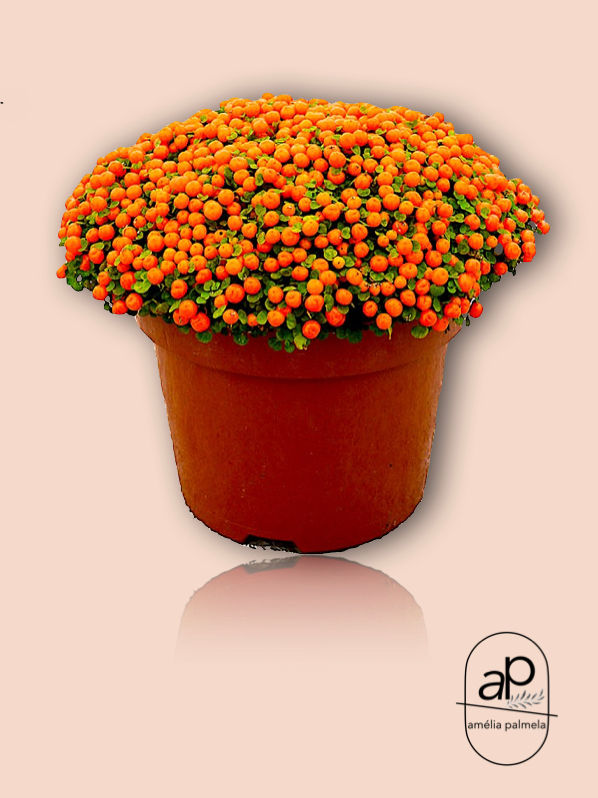Scientific name: Nertera granadensis
Family: Rubiaceae
Origin: Central America, South America, Argentina, Asia, Chile, Philippines, Guatemala, Indonesia, Malaysia, New Guinea, New Zealand, Oceania, Taiwan, Tasmania
Height:less than 15 cm
Luminosity: Diffuse Light, Partial Shade
Life cycle: Annual, Perennial
The nertera is a herbaceous, perennial and creeping plant, forming small compact and rounded bushes, suitable for ground cover or as a potted plant. It originates from several regions bathed by the Pacific Ocean, which includes countries in Asia, Oceania and the Americas.
Its leaves are tiny, succulent and rounded, bright green in color and glabrous and arise from thin, quadrangular, branched and prostrate twigs, which emit new roots from the nodes if in contact with the substrate.
The height of the adult plant is usually 5 to 8 cm, with a diameter of about 50 cm. The flowers appear in spring and are discreet, white and tiny, of little ornamental importance.
At the end of summer, the plant is filled with small berry-type fruits, spherical, durable and shiny, red, coral or orange, depending on the variety, with a white variety also occurring. The little berries give the plant a very graceful and decorative look, reminiscent of a cushion studded with pins.
This curious and beautiful plant, given its demanding requirements, is suitable only for more experienced gardeners. But those daring to grow Nertera can be rewarded with at least three months of lush fruiting. It is more common to find it for sale already covered in fruit and thus adorn the house for some time, without worrying too much about growing it.
In the United States, it is especially sought after during the Hallowen festivities, for interior decoration. But it can also be used in the garden, as ground cover, if it adapts well to the location.
It is ideal for rocky gardens, accompanying cactus and succulents, but with greater demand for humidity.
It should be grown in partial shade or diffused light, in substrate with good moisture retention capacity, but airy and drainable. The nertera appreciates the humidity in the environment and in the substrate, but excessive water can cause irreversible rot. Keep the plant in an airy place, but without air currents and where it can get the morning or evening sun.
Irrigate well and wait for it to dry slightly between waterings. In dry places it may be necessary to supplement the humidity with humidifiers or by placing a plate with stones and water under the vase, especially during flowering.
Reduce watering in winter.
It does not tolerate heat or intense cold. It does not like to be moved, turned or moved.
It likes a cool climate, its ideal temperature range is 10 to 15°C. If temperatures above 18°C occur during flowering, it will not set fruit.
Fertilize with fertilizers suitable for flowering during flowering and fruiting, diluted by half, once a month. Carefully remove the already darkened fruits, for a better appearance of the plant.
Nertera granadensis
Vase 8 | height 10 cm
